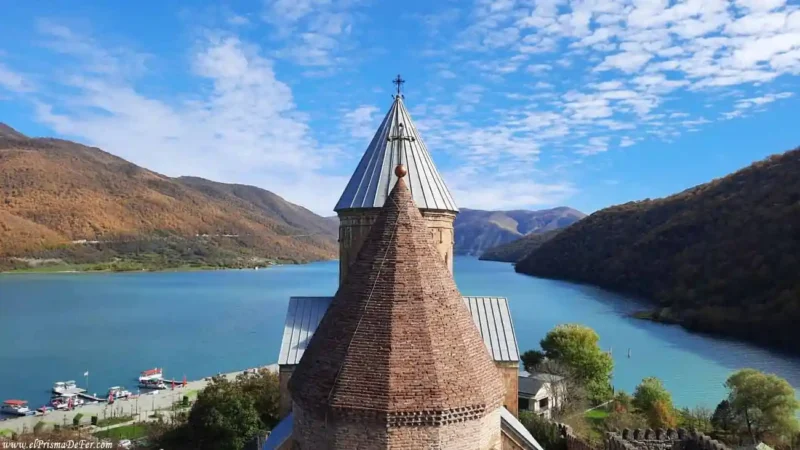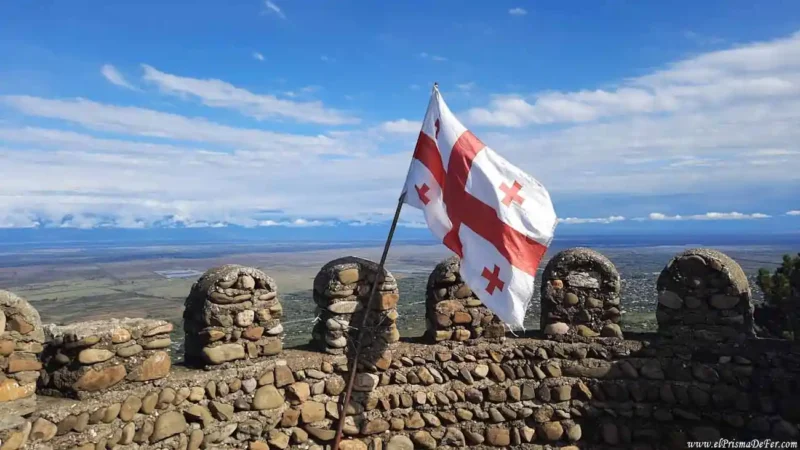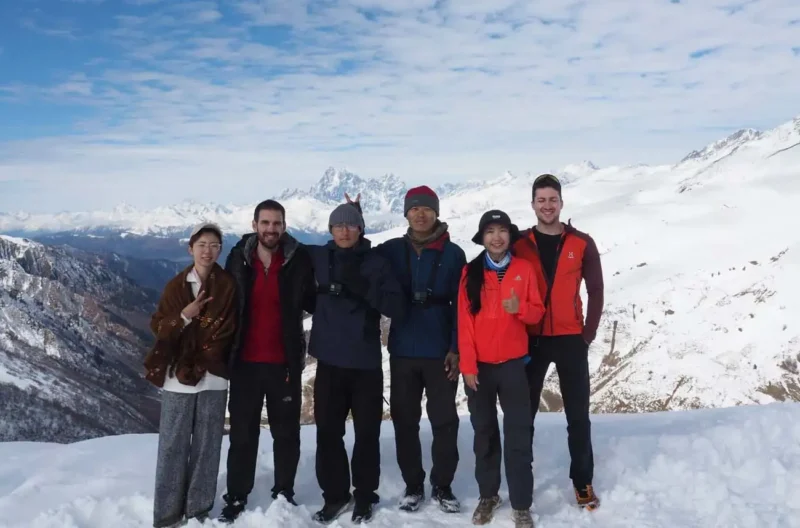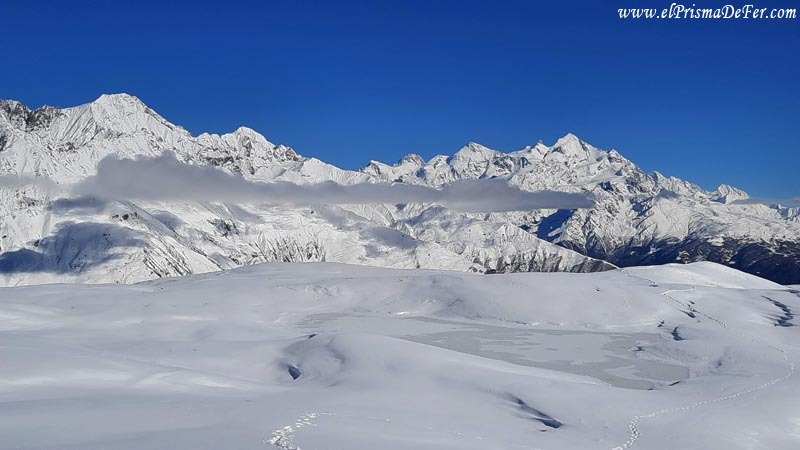Mestia is the heart of the mountainous region of Svaneti, in northwestern Georgia, and one of those places that seem to have come straight out of a medieval fairy tale. Surrounded by the snow-capped peaks of the Caucasus and adorned with its iconic stone Svan towers, the village offers a unique landscape where history, tradition, and nature intertwine. Despite its small size, it has become the perfect starting point for those looking to explore unforgettable trekking routes, such as the famous trail to Ushguli.
Beyond being a destination for adventurers, Mestia also entices travelers with its local culture, museums, and the peaceful pace of mountain life. It's a place where you can transition from the hustle and bustle of a backpacker-filled guesthouse to the calm of a stroll among ancient villages, always under the towering shadow of the mountains. Whether in summer, with its verdant valleys filled with flowers, or in winter, with a blanket of white covering everything, Mestia has a charm that's hard to forget.
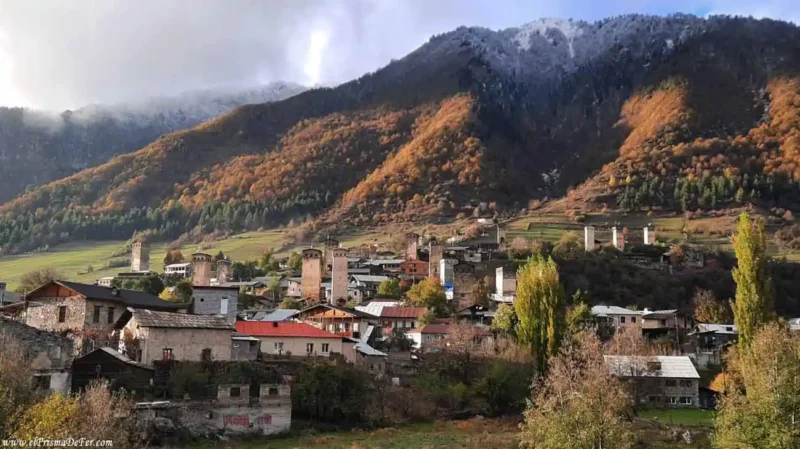

Table of Contents
Why is it called Svaneti and what do its medieval towers mean?
The region where Mestia is located is called Svaneti, in reference to the Svan people, one of the oldest ethnic groups in Georgia. The Svans have their own language, traditions, and customs, and for centuries they lived virtually isolated in these Caucasus Mountains, which allowed them to preserve a very distinct cultural identity.
One of the most characteristic symbols of Svaneti is its medieval stone towers, which rise in almost every village in the region. These constructions, which date mainly between the 9th and 13th centuries, fulfilled a double function: on the one hand, they served as defense against invaders and rival clans; and on the other hand, they were a family refuge in case of conflicts or avalanches. Each important family built its own tower, which explains why dozens of them are still preserved in Mestia and Ushguli today.
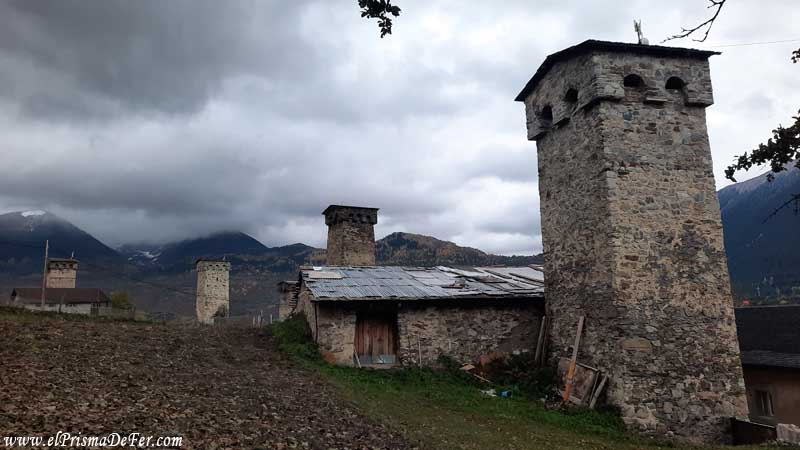
Walking among these towers not only transports the traveler to the Middle Ages, but also helps to understand why UNESCO declared Svaneti a World Heritage Site: few regions in the world have preserved their historical and cultural landscape so intact.
How to get to Mestia
The road to Mestia is a spectacle in itself, as the town is surrounded by forests and the imposing Caucasus Mountains. There are several ways to get there from Georgia's major cities:
From Tbilisi
- By direct marshrutka: From Didube Station in Tbilisi, marshrutkas depart for Mestia, taking about 9-10 hours. This is a budget-friendly option and popular with locals and travelers.
- By train + marshrutka: You can take a train from Tbilisi to Zugdidi. Upon arrival, marshrutkas are waiting at the station exit, taking passengers directly to Mestia.
- By domestic flight: From Natakhtari Airport, about 30 km from Tbilisi, flights to Mestia depart, taking approximately 1 hour. This is the fastest, but also the most expensive way.
- Car Rental: Another option is to rent a car. It allows you to stop along the way and move around freely, but it involves several hours of driving through the mountains.
From Kutaisi
If you arrive on a low-cost flight to Kutaisi, you can take a direct marshrutka to Mestia (6-7 hours). If there's no availability, you can take a train or marshrutka to Zugdidi and from there connect with another van to Mestia, which usually departs as soon as the train arrives.
From Batumi
The most common route is to take a train or marshrutka to Zugdidi (about 3 hours) and from there continue to Mestia (another 3-4 hours). During high season, direct marshrutkas from Batumi to Mestia sometimes operate, but not every day.
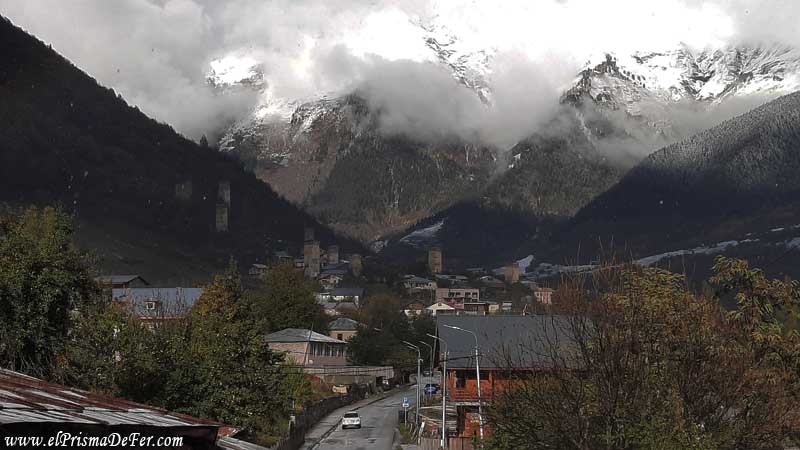
In all cases, the combination of train + marshrutka via Zugdidi is usually very practical, since the schedules are designed so that passengers can continue their journey without long waits.
And the best comes at the end: the last few hours of the journey offer spectacular landscapes, with melting rivers, snow-capped mountains, and the first Svan towers that announce our arrival in Mestia.

Map with treks and places of interest in Mestia
What to do in Mestia (beyond trekking)
Although Mestia is the gateway to some of the best trekking routes in the Caucasus, the town itself offers some recommended activities to complement hiking.
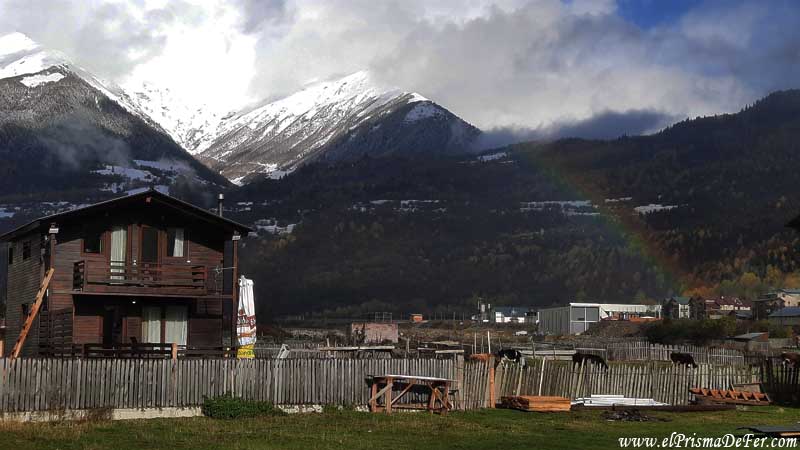
A must-see is the Svaneti Museum of History and Ethnography, where religious icons, weapons, ancient manuscripts, and photographs telling the story of this mountain people are on display.
You also can't miss visiting at least one of the towers that function as museums:
- Margiani House-Museum: Located in a traditional complex, this tower offers the possibility of exploring its floors and climbing to the top. From there, you'll get a breathtaking panoramic view of the valley.
- Ratiani Family Tower: This family tower is open to the public and allows you to climb to the top for spectacular views. There is an accessible entrance fee (approx. 10 GEL), and the visit is extremely enriching.
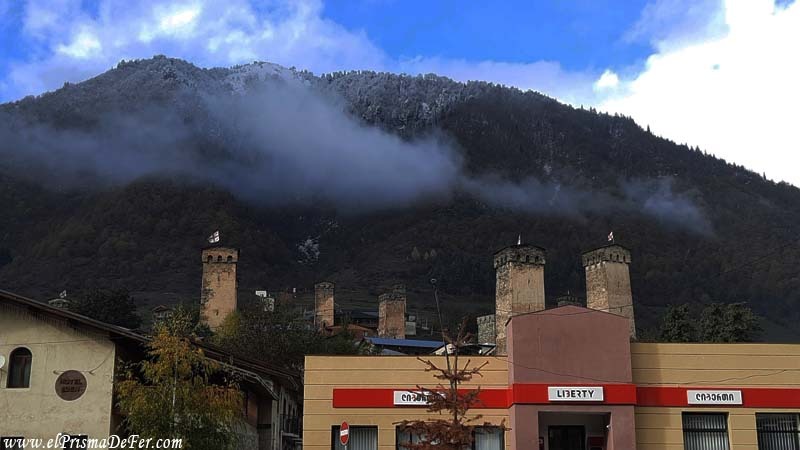
Visiting Ushguli without trekking
For those who don't want to do the demanding trek from Mestia, getting to Ushguli by car or public transport is entirely possible and much faster. Ushguli is one of the highest villages in Europe and an iconic location in Svaneti, famous for its medieval towers and mountain scenery.
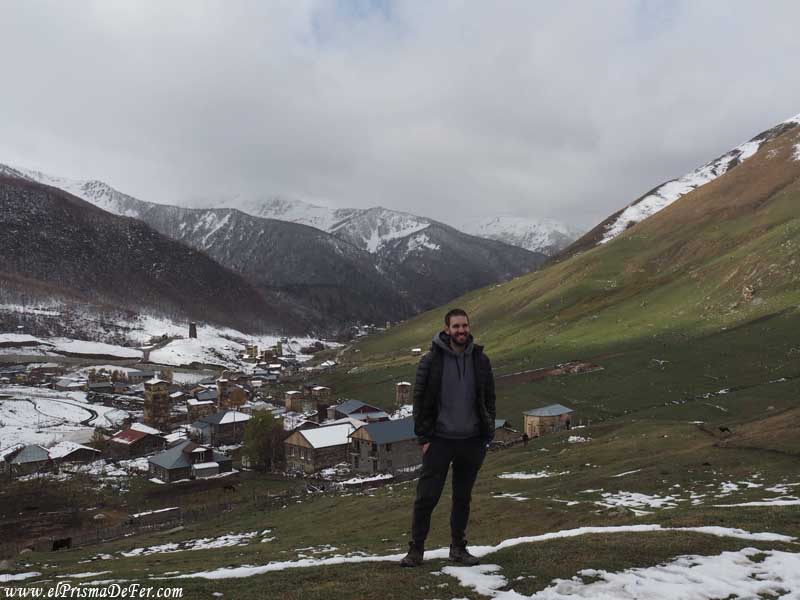
To get to Ushguli from Mestia by public transport you can:
- Go with a marshrutka: Shared vans leave from Mestia to Ushguli, usually early in the morning and taking about 4 hours to arrive. They are usually waiting near Mestia's central square, where the official bus stop is, and operate mainly during the high season.
- Travel by private car or taxi: Many travelers choose to rent a car in Mestia or share one with other tourists. The journey takes about 3-4 hours, depending on the road conditions, which can be dirt or have mountainous sections. The advantage is being able to stop at viewpoints, villages, and waterfalls along the way.
This mode of transportation allows you to enjoy Ushguli without the physical effort of trekking, although you miss out on the experience of traversing the valleys and villages on foot. It's ideal if you're looking to combine travel with comfort or if you're short on time in the region.
Other activities in Mestia
Walking through the village is another pleasure: Svana towers mingle with modern wooden houses, and the landscape is framed by glaciers and snow-capped mountains. There are also cafes where you can enjoy typical dishes such as kubdari or khachapuri, ideal for recharging your batteries.
During the winter, the Hatsvali ski resort, just a few kilometers from Mestia, offers slopes for all levels and much more affordable prices than other destinations.

Trekking in Mestia
Mestia is the epicenter of hiking in the Svaneti region, surrounded by snow-capped mountains, glaciers, and spectacular valleys. Several trekking routes depart from the village itself, catering to different levels and lengths of hike.
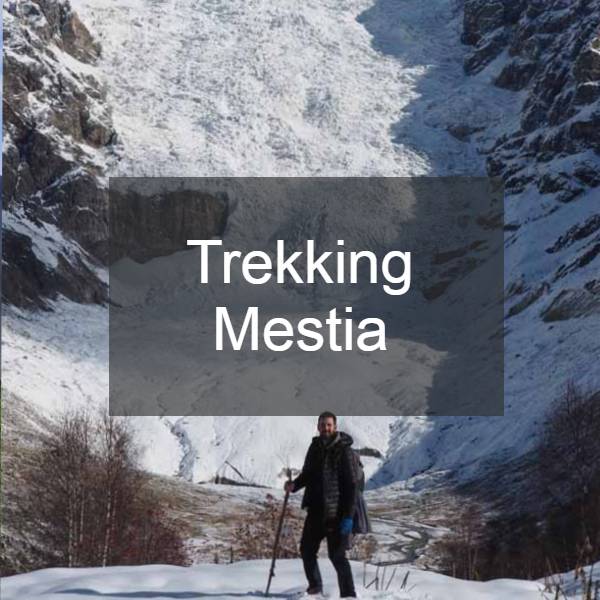
Do you want to follow my routes precisely?
Download the KML/KMZ files for the Mestia-Ushguli and Mestia-Koruldi Lakes treks in the Svaneti region of Georgia and open them in apps like Maps.me or Gaia GPS to view the complete route offline. Ideal if you want to navigate the valley with confidence, even without a signal.
Get the files from Gumroad for a small contribution.
Chalaadi Glacier Trek
The Chalaadi Glacier is one of the most accessible and popular hikes from Mestia. The trail starts near the village and follows the Mestiachala River valley through forests and mountains until reaching the base of the glacier. It is a simple trek that can be done in half a day (3 to 4 hours round trip), ideal for those who are new to the hike or have little time.
Trekking from Mestia to Ushguli
The most famous trek in the area is the Mestia to Ushguli trek, a multi-day route that connects remote villages and offers picture-postcard landscapes among glaciers and mountains.
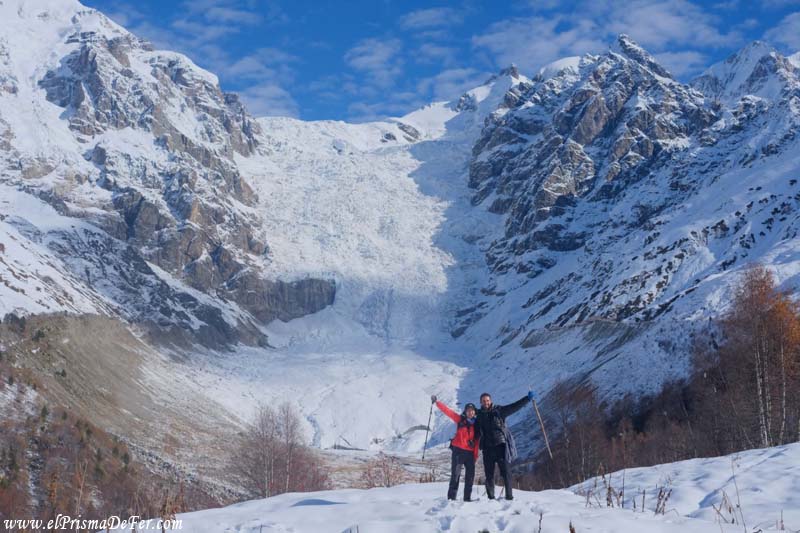
It lasts between 2 and 4 days, with stops in villages such as Zhabeshi, Adishi or Iprari, where you usually sleep in family homes or guesthouses. It's considered one of the most spectacular treks in the Caucasus. You can read the full post with all the details on how to do it.
Trekking to the Koruldi Lakes
The trek to the Koruldi Lakes is an experience that combines effort and reward from the first step. Climbing through forests and meadows of the Caucasus, the views that open up at every turn are breathtaking, and the lakes, whether frozen (as I found them) or reflecting the sky, make the entire journey worthwhile.
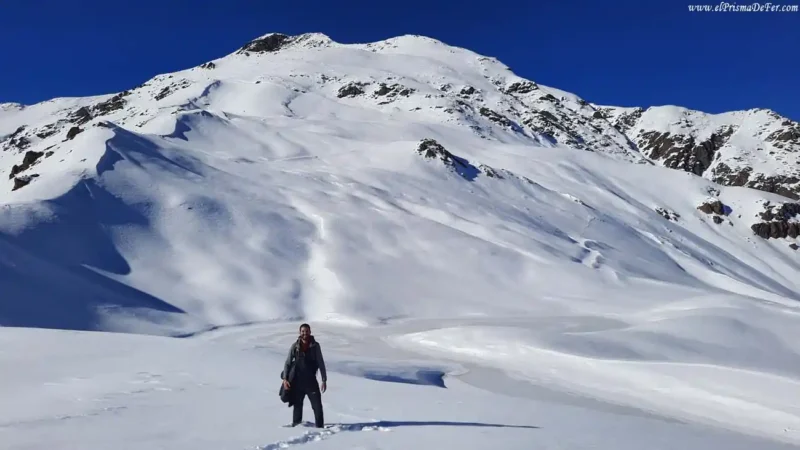
Although it's a one-day trek, the feeling of being surrounded by mountains and nature makes it unforgettable.
Trekking from Mestia to Mazeri
Less well-known than the previous hikes, the Mestia to Mazeri trek connects two of Svaneti's most beautiful villages. The trail passes through forests, rivers, and mountain passes with incredible views. The entire route is usually completed in 2 days, although some extend it longer. A common itinerary is:
- Day 1: From Mestia to Guli Pass (2,960 m), one of the highest points of the trek, with spectacular views of Mount Ushba.
- Day 2: Descent to the village of Mazeri, in a valley surrounded by mountains and waterfalls.
It's a more physically demanding hike, but much less crowded than the Ushguli hike, making it a perfect alternative for those seeking a solitary trek in the wild.

Best time to travel to Mestia
The best time to visit Mestia and go trekking in the Svaneti region is between June and September, when the weather is more stable, the trails are snow-free, and the mountains are in all their green and flowery splendor. During these months, the days are long and the temperatures are pleasant, making it easier to explore the valleys and mountain passes.
However, it's worth keeping in mind that snowfall can begin as early as October, even on the most popular routes. I experienced this at the end of that month, when the roads were covered in snow in several sections. While this slowed progress due to the slippery conditions, it also completely transformed the landscape: the forests, mountains, and lakes looked like something out of a fairy tale, creating an epic atmosphere unlike that of summer.
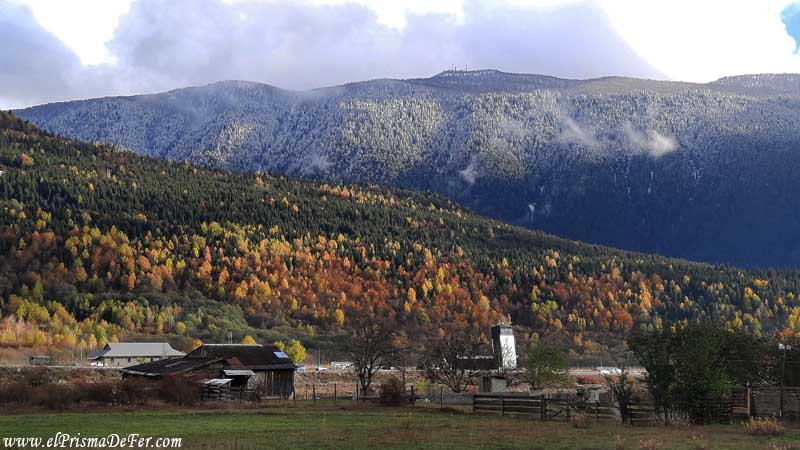
In winter (November to March), Mestia becomes a ski and snow sports destination, with several slopes open near the village. However, many trekking trails remain inaccessible due to snow accumulation.
Where to stay in Mestia
Mestia is a small town, so almost any place you stay is close to the main services, restaurants, and trails leading into the mountains. There's no need to worry about location, as everything is easily accessible on foot.
I stayed in three different places during my stays in the city:
- House in Mestia: A typical hostel with a shared kitchen and dormitories. The backpacker atmosphere is ideal for meeting people arriving or returning from treks in the area.
- Hotel Daeli: With a prime location right in the center of Mestia, it's a good choice if you're looking for comfort and immediate access to everything the town has to offer.
- N&N: An old local house that still has one of Svaneti's typical towers. It offers shared kitchens and bathrooms, but has a quieter, less social atmosphere than a hostel.
How many days to stay in Mestia
Mestia is the ideal starting point for exploring Svanetia and doing various treks, so the number of days you should stay depends on how active you want to be. With 2 days you can explore the city, visit some of its museums and medieval towers, and take a short hike like going to the Chalaadi Glacier.
If you want to do longer treks, such as the Ushguli or Koruldi Lakes treks, we recommend 4 or 5 days, as this allows you to take your time, enjoy the scenery, and rest between days.
My personal thoughts on Mestia
Of all the regions I visited in Georgia, Mestia was undoubtedly the one I fell in love with the most. Not only for the mountains and trekking, which are already spectacular in themselves, but also for the charm of the traditional villages and medieval towers that dot the landscape. This combination of nature and historic architecture gives it a unique character, impossible to find anywhere else in the country.
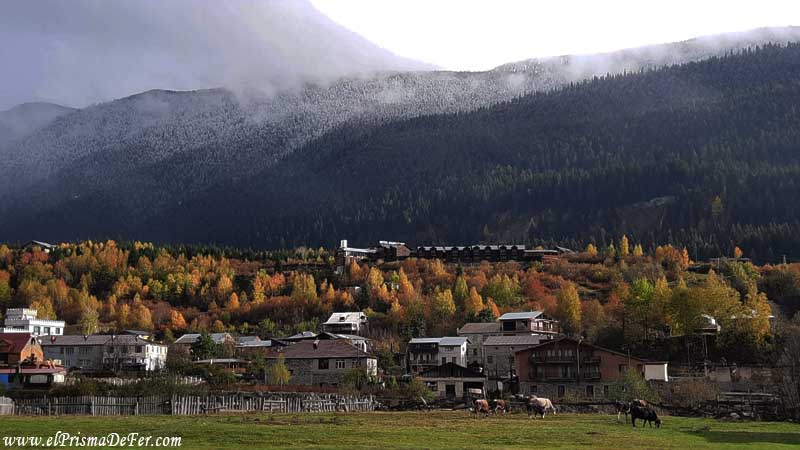
I recommend visiting Mestia regardless of whether you plan to trek or not. Walking through the village, exploring the surrounding area, and enjoying the panoramic views is enough to make you fall in love with the region. Every corner has a special charm, and the feeling of being in a place where time seems to pass differently is difficult to describe, but definitely memorable.

